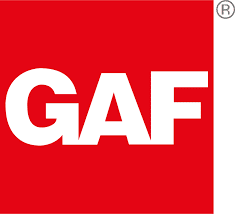Colorado is one of the states in the US that is prone to hailstorms. Like most devastating natural disasters, heavy and frequent hailstorms pose a serious threat to property, with roofs being the main targets. This often leaves many residential and commercial property owners questioning if they need to replace their roofs after a hailstorm.
This article delves into the effects of hail on roofs, the factors influencing the decision to replace a roof after a hailstorm, how to assess the damage, and the insurance implications associated with roof replacements.
Introduction to Hailstorm Damage on Roofs
Hailstorms can be formidable forces of nature, wreaking havoc on various structures, including roofs. When a hailstorm strikes, the impact on your roof can range from minor cosmetic damage to severe structural impairment.
Although there have been massive improvements in shingle design and technology in recent years, there currently isn’t a hail-proof roof, at least not yet. Every roof, no matter the quality, is susceptible to storm damage. Seeing that hail can damage your roof under any condition, what do you do in case of such an eventuality?
What Hail Can Do to a Roof
Hailstones, which form in thunderstorm updrafts, can vary in size and hardness, ranging from small pellets to large, damaging chunks. When these icy missiles collide with your roof, they can cause several types of damage:
- Dented or Cracked Shingles: Hailstones can leave visible dents or cracks on asphalt shingles, leading to compromised roof integrity.
- Loosened Granules: The protective granules on shingles can be loosened or knocked off by hail, exposing underlying layers to further damage.
- Punctures: Hailstones may create holes in shingles, allowing water to infiltrate the roof structure and cause leaks.
- Damage to Gutters and Flashing: Hail can also harm gutters, downspouts, and flashing, impacting the entire roofing system.
Understanding the Need for Roof Replacement
If your roof has been damaged by hail, it’s important to assess the severity of the damage before making a decision about whether to repair or replace the roof. Factors to consider when making this decision include the size and strength of the hailstones, the extent of the damage to the shingles, the age of the roof, and the cost of repairs versus replacement.
Determining the Severity of Hail Damage
The severity of hail damage can sometimes be difficult to assess; however, there are a few signs that can indicate that your roof needs to be replaced. This includes shingles that are curling, cupping, cracked, broken, missing, or have large dents or holes.
The Lifespan of a Roof After a Hailstorm
The remaining lifespan of your roof also influences the replacement decision. If your roof is relatively new and has a significant lifespan ahead, repairs might be sufficient to address the hail damage. However, if your roof is nearing the end of its lifespan, a replacement could be a more cost-effective long-term solution.
Even if your roof does not need to be replaced immediately, hail damage can shorten the lifespan of your roof. In general, a roof that has been damaged by hail will have a lifespan of about 10 years, as opposed to the typical lifespan of 20-25 years.
How to Inspect Your Roof After a Hailstorm
If you think your roof may have been damaged by hail, it’s important to inspect it as soon as possible. Some tips for inspecting your roof after a hailstorm include looking for signs of damage (such as dents, holes, cupping, curling, or cracks), checking for leaks, inspecting the gutters and downspouts for damage, and hiring a professional roofing contractor to inspect your roof for you.
Signs of Hail Damage on the Roof
After a hailstorm, homeowners and commercial building owners should conduct a visual inspection of their roofs. Some common signs of hail damage include circular or irregular patterns on shingles, missing granules in gutters and at the base of downspouts, and dents and bruises caused by hail impact.
Professional Roofing Inspections
If you’re not sure whether your roof has been damaged by hail, or if you’re not comfortable inspecting your roof yourself, you can hire a professional roofing contractor to inspect your roof for you, like us! A professional roofing contractor will be able to assess the severity of the damage and recommend whether to repair or replace your roof.
Roof Repair vs Roof Replacement After a Hailstorm
If your roof has been damaged by hail, you’ll need to decide whether to repair or replace the roof. There are a number of factors to consider when making this decision, including the severity of the damage, the age of the roof, and the cost of repairs versus replacement.
Factors Influencing the Decision
The following factors can influence the decision of whether to repair or replace a roof after a hailstorm:
- The severity of the damage: If the damage is minor, it may be possible to repair the roof. However, if the damage is extensive, it may be necessary to replace the roof.
- The age of the roof: If the roof is old, it may be more cost-effective to replace it than to repair it. This is because the cost of repairs may be close to the cost of replacement, and the new roof will have a longer lifespan.
- The cost of repairs versus replacement: The cost of repairs will vary depending on the severity of the damage. The cost of replacement will also vary depending on the type of roof and the size of the roof.
Long-Term Costs of Repairs
It’s important to consider the long-term costs of repairs when making the decision of whether to repair or replace a roof after a hailstorm. Repairs may be less expensive upfront, but they may not be as cost-effective in the long run. This is because repairs will need to be done more frequently than replacements, and the cost of repairs will likely increase over time.
When You Should Consider a Roof Replacement
There are a few factors to consider when deciding whether to repair or replace your roof after a hailstorm. This includes the severity of the damage, the age of your roof, and the cost of repairs versus replacement.
Extensive Hail Damage
If the hailstorm’s impact has caused widespread damage to your roof, replacement becomes a more viable option. Extensive damage can compromise the roof’s performance and lead to recurrent issues that might outweigh the cost of a new roof.
Age Constraint of the Roof
As a roof ages, its ability to withstand damage decreases. If your roof is relatively old and has experienced significant hail damage, it might be time for a replacement to ensure the safety and protection of your home.
Cost of Repairs Versus Replacement
The cost of roof repairs versus replacement can vary depending on the severity of the damage, the type of roof, and the labor costs in your area. However, in general, repairs are less expensive than replacement.
The cost of roof repairs can range from a few hundred dollars to several thousand dollars. The most common type of roof repair is shingle replacement. This involves replacing individual shingles that have been damaged by hail, wind, or other weather events. The cost of shingle replacement will vary depending on the size of the damaged area and the type of shingles that need to be replaced.
The cost of roof replacement will vary depending on the size of your roof, the type of roof you choose, and the labor costs in your area. However, you can expect to pay anywhere from $5,000 to $20,000 for a typical roof replacement.
Insurance and Your Hail-Damaged Roof
Hailstorms can cause significant damage to roofs, and the cost of repairs or replacement can be high. If your roof has been damaged by hail, you may be able to file a claim with your insurance company to cover the cost of repairs.
Filing a Roof Replacement Insurance Claim
To file a claim, document the damage by taking photographs and videos of the hail damage to provide evidence for your claim. Also, contact your insurance provider to report the damage and initiate the claims process promptly.
What to Expect from Your Insurance Provider
After filing a claim, an insurance adjuster will visit your property to assess the damage. It is essential to have your roof inspected by a professional before the adjuster’s visit to ensure an accurate evaluation. Keep in mind that the insurance payout may not cover the entire cost of a roof replacement, depending on your policy’s terms and coverage limits.
Hiring a Professional for Roof Replacement
Hiring a professional for roof replacement is a big decision, but it’s one that’s worth making sure you get right. A poorly-installed roof can lead to leaks, mold, and other problems down the road.
There are several benefits of hiring a roofing contractor which include having the experience and expertise to get the job done right, helping you choose the right type of roof for your home or business, ensuring that the roof is installed properly to prevent leaks and other problems down the road, and possibly getting you a better price on materials and labor.
Finding a Reputable Roofing Contractor
Choosing the right roofing contractor for your roof replacement is vital to ensure a successful and long-lasting result. Consider the following factors when selecting a contractor:
- Experience and Expertise: Look for contractors with a proven track record in handling roof replacements after hailstorms.
- Licenses and Insurance: Ensure the contractor has all the necessary licenses and insurance to protect you from liability.
What to Expect During a Roof Replacement
- Roof replacement is a significant undertaking. Understanding the process can help you prepare for the disruption and ensure a smooth transition:
- Preparation: The contractor will remove the existing roofing materials and inspect the underlying structure for damage.
- Installation: The new roofing materials will be installed, including underlayment, shingles, and any additional components.
Final Thoughts
After a hailstorm, carefully assess your roof for damage and consider the severity of the hail impact, the age of your roof, and the potential long-term costs of repairs. If the damage is extensive or your roof is nearing the end of its lifespan, a roof replacement might be the best course of action. Remember to consult with professionals and your insurance provider to make an informed decision that considers safety and longevity.
While researching roofing contractors in your area, consider us! We will even work with you during the insurance claims process, which can sometimes seem like a daunting process, but it doesn’t have to be with the right team. We will also provide recommendations on the best roofing materials to use for hail, including F-Wave shingles. Talk to us today if you need any help with roof damage assessment, minor repairs, replacement, and more.
Related Articles:














